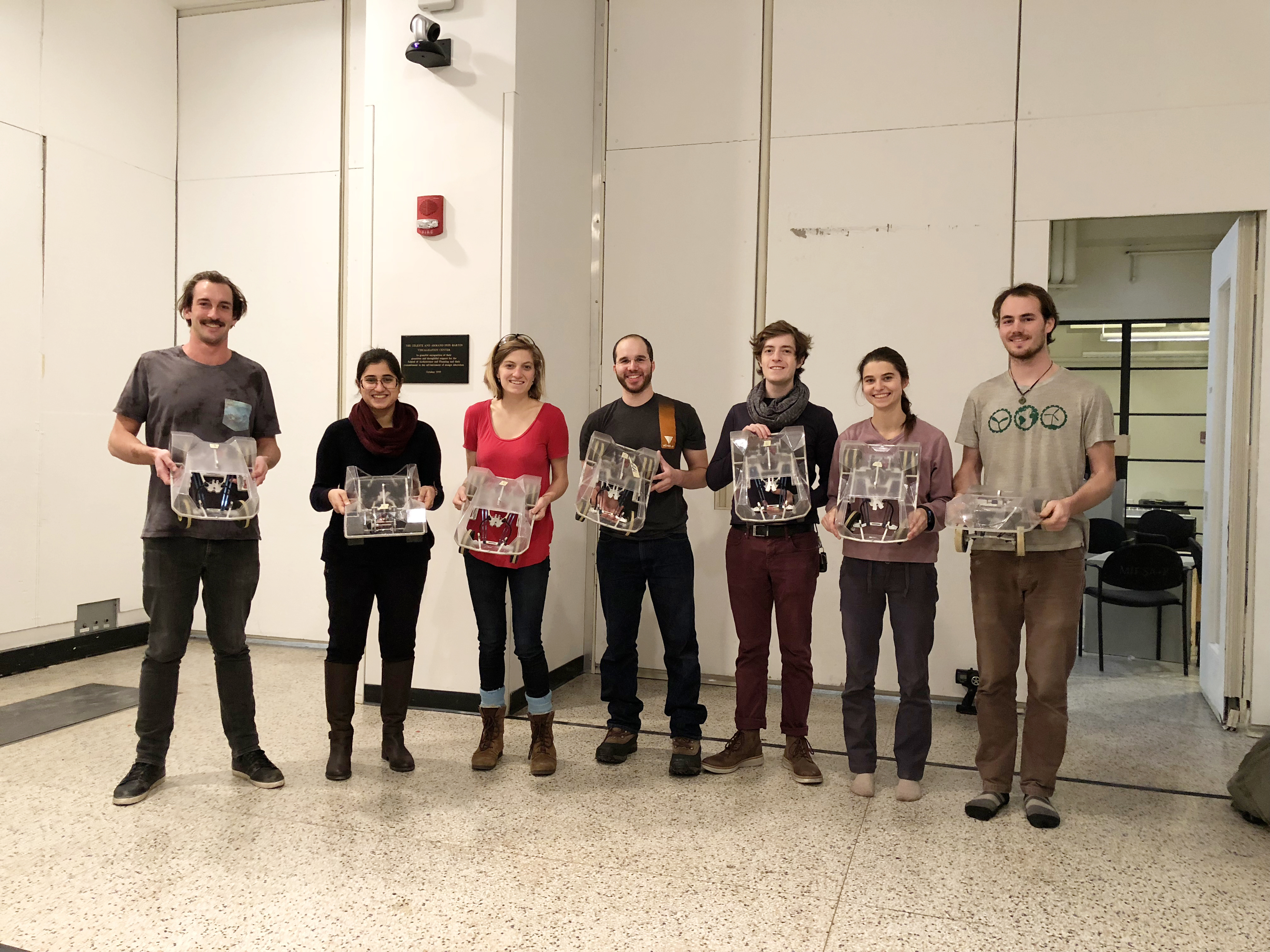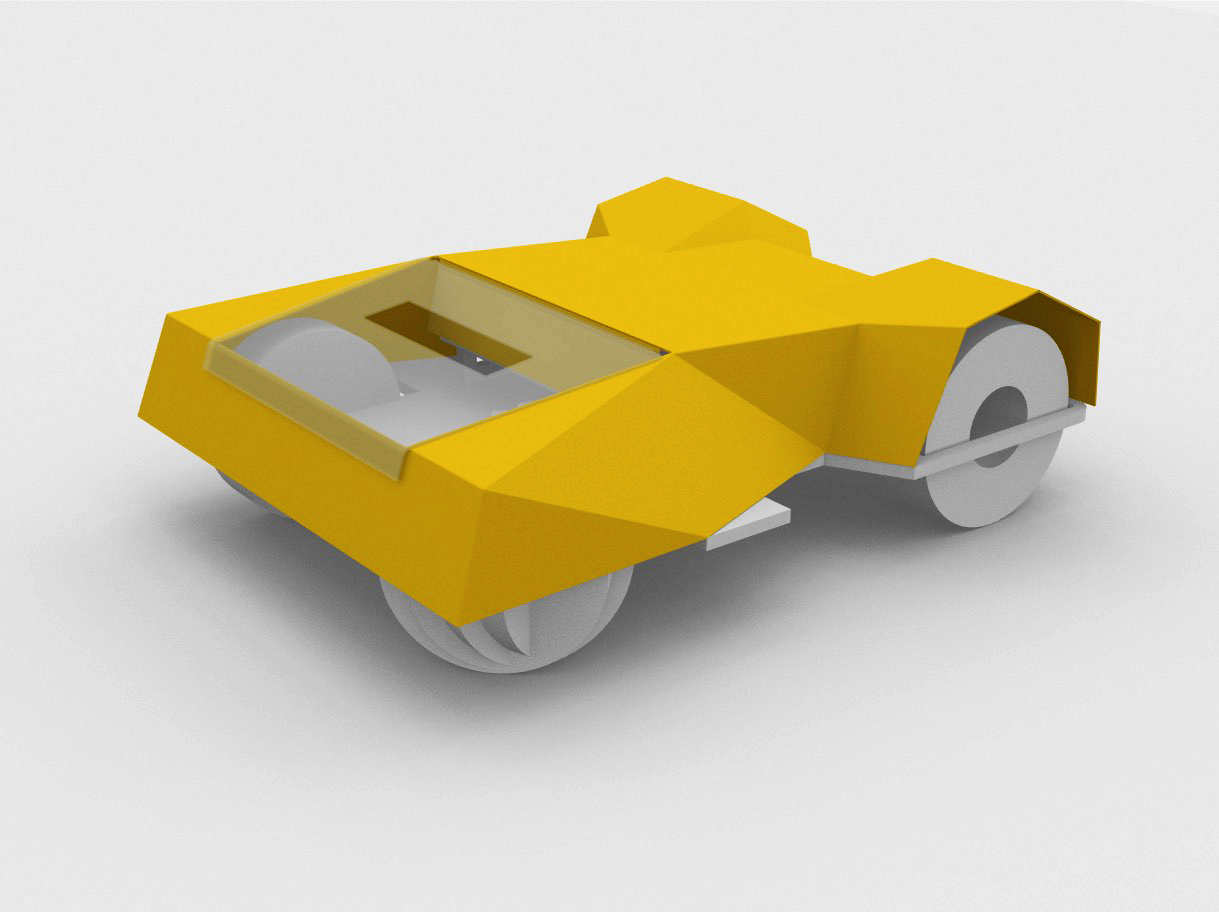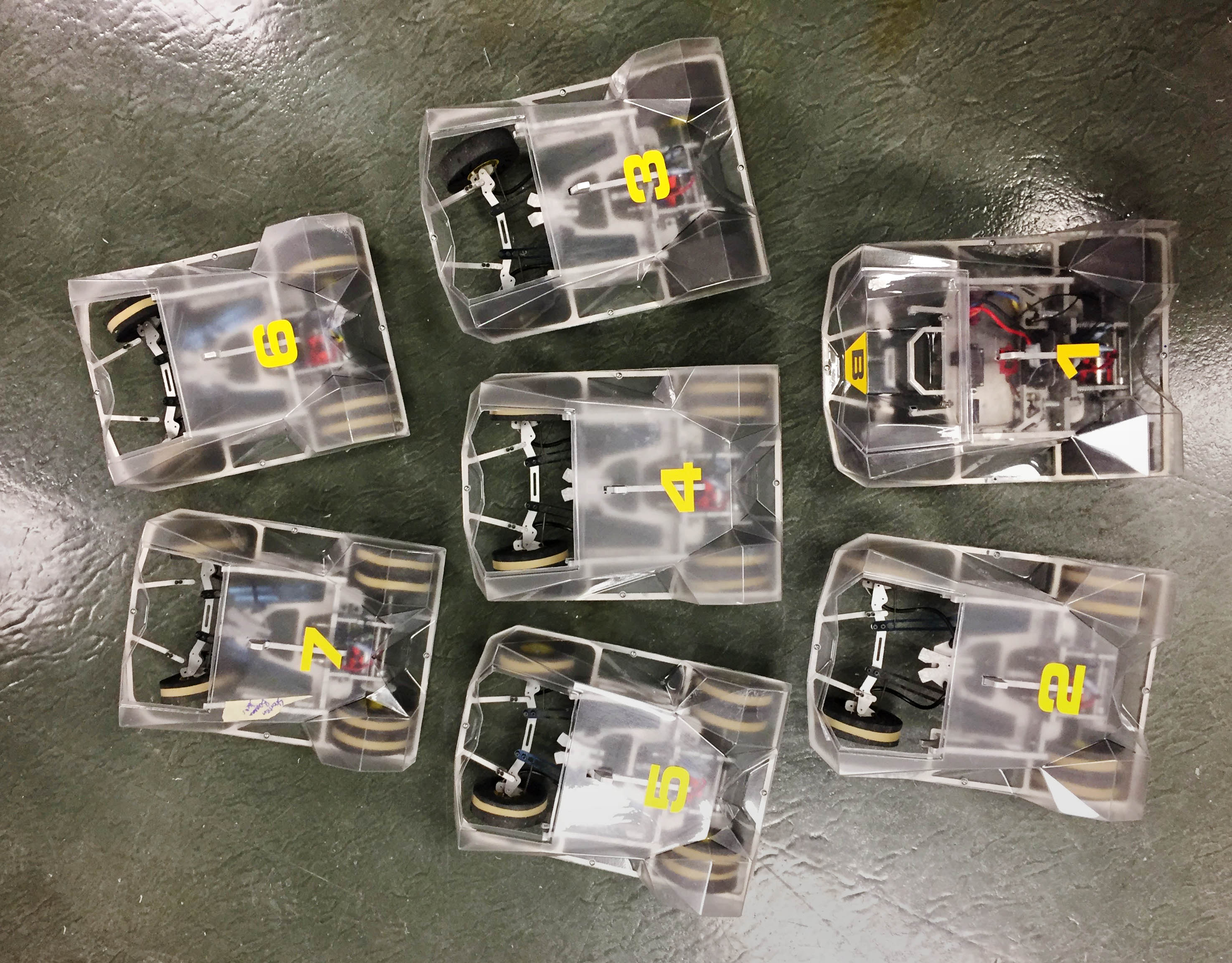Fast Assembly RC Car
2.810: Manufacturing Processes and Systems was a class in 2 parts:
Part one was learning about manufacturing, and part two was exercising that learning through a constrained manufacturing RC project, leading to a competitive race.
In this page, I'll cover the second part - designing, fabricating, assembling, and finally racing a fleet of RC cars! Here's our final result:

The car challenge has roughly the following constraints:
1) The team must make as many cars as there are team members
2) The car fleet must share one control + power hub, that will be swapped at each lap during the race
3) The chassis must be waterjet cut and fit within a prescribed footprint
4) The car must be enclosed in a thermoform shell
5) Wheel hubs will be injection molded, and wheels are limited in diameter
6) All motors and electrical components are provided and cannot be substituted
7) You may not exceed $20 of extra material spent per car.
Team B (after a crucial pre-race practice):
 From left to right: Blake Cole, Aliza Khurram, Me, Michael Bell, Peter Godart, Sally Miller, William Sawyer
From left to right: Blake Cole, Aliza Khurram, Me, Michael Bell, Peter Godart, Sally Miller, William SawyerOur team (pictured above), was comprised of 7 Mechanical Engineering graduate students. From our first meeting, it was clear that we all had unique ambitions and exciting technologies that we wanted to contribute to our car, and we decided to throw caution to the wind and do them all.
These ambitions were:
A front decoupled suspension using spring steel flexures
A rear suspension through a spring loaded hinge for the rear drivetrain
Bowden cable steering, to allow for independent wheel suspension in the front wheels
Spring loaded "Cassette" control box design, for fast swapping between cars
A beautiful, well crafted, and carefully detailed 2 part thermoform shell design (my ambition)
Car shells made in previous years of the class were all designed as organic, rather blobby forms, and I wanted to create something wildly different.
Examples of previous thermoform molds from the class:

I set out to design a faceted shell with the goal of minimizing the number of necessary facets, while still achieving an exciting shape and working with the design of the chassis and control box. It should perhaps be noted that this project was in 2017, two years before the Tesla Cybertruck reveal.
Some sketches brainstorming early concepts for form:

An early iteration:

I created a quick foam and paper model to share with teammates and test fit:

It was quickly obvious from this model that it would make removal of the control box difficult, as the through hole was too small, and hard to fit one's hand into, so future iterations moved towards a larger front section of the shell.
Final Iteration:

Video of milling the thermoform mold:
Thermoforming:

Completed Fleet:
